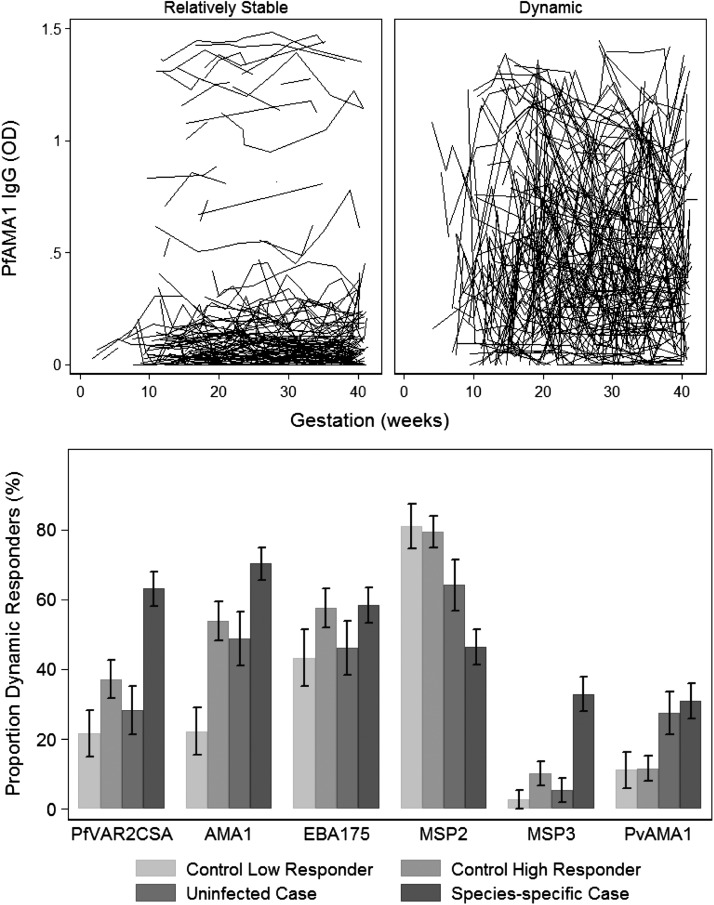Figure 2.
Antibody levels over gestation could be classified as relatively stable or dynamic. For each individual woman, the mean antibody response over gestation time and standard deviation (SD; ie, how far the individuals IgG response fluctuated from their mean response) was calculated. Use of a cutoff of a SD of 0.1 broadly classified individual woman as having dynamic (SD ≥ 0.1) or relatively stable responses (SD < 0.1). (A) The categorization of relatively stable and dynamic responses to PfAMA1 is shown as a representative example of antimalarial IgG responses throughout pregnancy (each line represents antibody levels in an individual over time). (B) The proportion (%) of dynamic antibody responses according to longitudinal exposure group. Species-specific cases refers to women who were infected with Plasmodium falciparum or Plasmodium vivax during pregnancy for P. falciparum and P. vivax antigens, respectively. The proportion of women with dynamic responses during pregnancy was associated with species-specific longitudinal exposure groups PfVAR2CSA, P < .001; PfAMA1, P < .001; PfEBA175 P = .24; PfMSP2, P < .001; PfMSP3, P < .001; PvAMA, P = .006.

